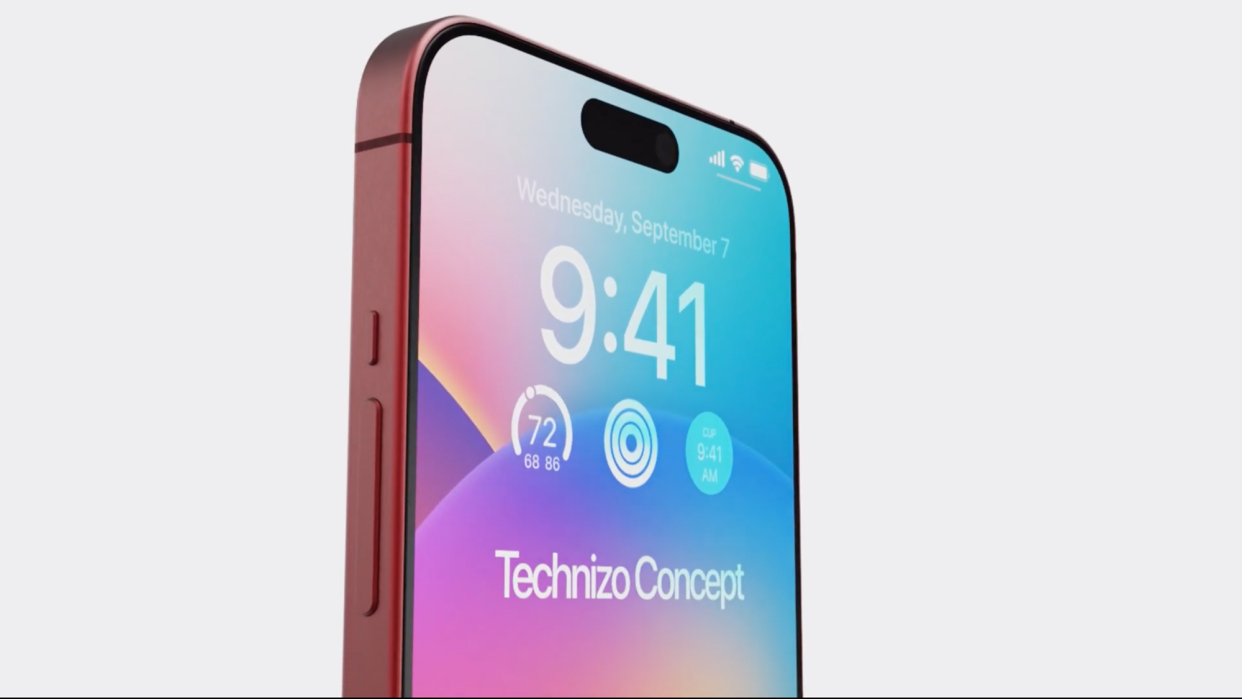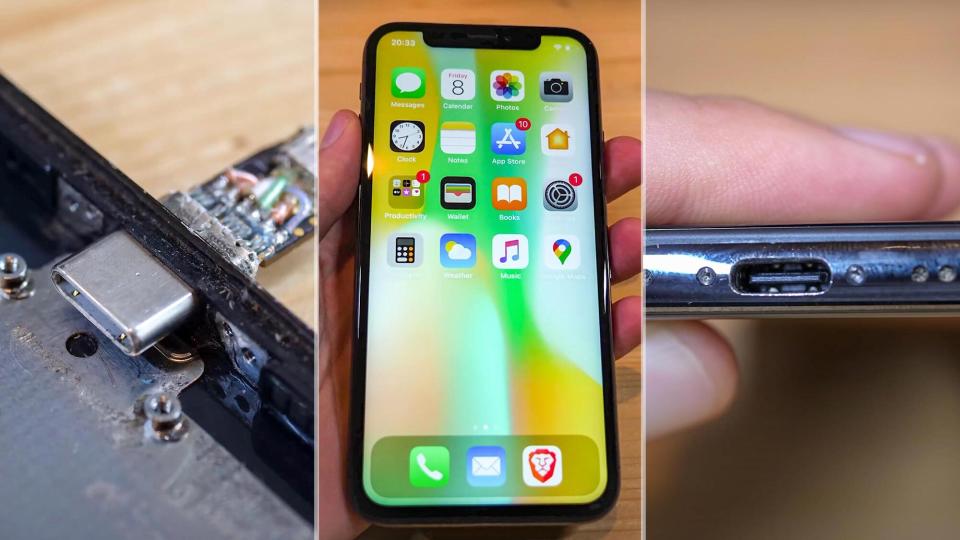iPhone 15 Pro vs iPhone 13 Pro: Biggest expected upgrades

If you snagged an iPhone 13 Pro when it was first released in 2021, odds are you're approaching the end of your contract. And while the iPhone 15 series is still several months away at this point, you're probably already wondering: Is it finally time to upgrade your old iPhone for the iPhone 15 Pro?
We count the iPhone 13 Pro as one of the best phones you can get right now. But if you're looking to upgrade later in 2023 or are simply wondering what changes Apple will make with the next Pro iPhone, we've got you covered. We're breaking down all the rumors for the iPhone 15 Pro and how they compare with the iPhone 13 Pro to give you a sense of the biggest expected differences.
Based on everything we've heard so far, the most premium flagship in the iPhone 15 line could get a breakthrough A17 Bionic chip, USB-C charging capabilities and a more durable titanium frame among other tweaks and improvements. Here's everything you need to know.
iPhone 15 Pro vs iPhone 13 Pro: Rumored specs
iPhone 15 Pro vs iPhone 13 Pro: Expected price hike and release date
We still don't have an official launch date for the iPhone 15 series. Given Apple's previous pattern of launches, we expect the iPhone 15 Pro to land sometime in September, but it could go on sale on September 22 specifically based on one leak.
Rumors have been swirling for months that we could see a $100 price hike for both iPhone 15 Pro models. For reference, the iPhone 13 Pro starts at $999 for the 128GB option. The rumored increase would push the iPhone 15 Pro's starting price to $1,099, while the iPhone 15 Pro Max would cost $1,199 — the same price Samsung charges for its premium Galaxy S23 Ultra phone.
Consumers in the U.K., Australia and other international markets saw comparable price hikes with the iPhone 14 series. But U.S. iPhone users had been spared, seeing the same iPhone Pro prices since the 13 Pro. That could change with Apple's next generation of phones.
iPhone 15 Pro vs iPhone 13 Pro: Goodbye Lightning, hello USB-C

With its iPhone 15 series, Apple is finally expected to ditch its proprietary Lightning port in compliance with new EU rules requiring phone makers to adopt USB-C connectivity before the end of 2024. This switch will provide a more common charging standard and allow for faster data transfer speeds.
We expect the iPhone 15 Pro to make the move to USB-C, while the iPhone 13 Pro uses the same Lightning connection Apple has clung to since 2012. It shouldn't be too big of a transition though, as it isn't likely to impact charging times. Odds are we'll see the same 23W charging speeds we did on the iPhone 13 Pro with the iPhone 15 Pro. The main difference is you'll have one less type of charger to keep track of to power all your devices.
iPhone 15 Pro vs iPhone 13 Pro: Camera upgrades
With last year's iPhone 14 Pro Max and iPhone 14 Pro models, Apple phones received the first bump to camera-megapixel count since the iPhone 6S introduced a 12-megapixel sensor in 2015. With the iPhone 15 series, it's rumored the 48-megapixel camera sensor won't be exclusive to the Pro line anymore, which means we could see a main 48MP camera come to the regular iPhone 15 as well.
iPhone 13 Pro users who upgrade can expect to gain access to a slew of camera upgrades, including a revamped front camera with autofocus and Action mode to instantly boost video quality. The iPhone 14 Pro and iPhone 14 Pro Max already topped our list of the best camera phones you can buy, and the iPhone 15 series seems poised to give them a run for their money.
iPhone 15 Pro vs iPhone 13 Pro: A faster processor
In terms of processing power, the iPhone 15 Pro is two generations ahead of the iPhone 13 Pro, so performance is likely the biggest difference you'll notice when upgrading. Rumor has it the iPhone 15 Pro will pack a more efficient 3-nanometer A17 Bionic chipset when it launches.
That tracks, as even before the iPhone 14's rolled out, analysts were predicting Apple would use different processors for its phones moving forward, which is exactly what played out. The top-of-the-line A17 Bionic chip looks to be exclusive to the Pro model, though, as the iPhone 15 and iPhone 15 Plus are expected to belatedly inherit the A16 from the last generation.
The iPhone 13 Pro uses an A15 Bionic chip, which in our tests put it head-to-head with the most powerful Android phones back when it first came out in 2021. It remains to be seen exactly how much of a performance boost you can expect by upgrading. But based on purportedly leaked benchmarks for the iPhone 15 Pro that have surfaced, the next-gen iPhone is set to smoke its predecessor as well as the chipsets of even the best Android phones.
You can compare the alleged scores below. Geekbench 5 measures the CPU's overall performance, broken out into single- and multi-core results.
iPhone 15 Pro vs iPhone 13 Pro: A new action button and tougher frame

From a design standpoint, the iPhone 15 Pro is tipped to introduce some big changes to Apple's premium phones, so those upgrading their older iPhones have plenty to look forward to.
Word is Apple will use a titanium alloy as its metal of choice for the frame instead of the stainless steel it used with the iPhone 13 Pro. It's a switch that's been in the works for some time. Before the last generation rolled out, some sources claimed the iPhone 14 Pro would get a titanium frame — a move that obviously didn't pan out.
Not only is titanium a lighter material, which means the 15 Pro would likely weigh less than the 13 Pro, but it's also much more durable. Titanium is considered twice as strong as aluminum and roughly 30% stronger than steel. So we could be in for a much tougher iPhone than ever before. One downside though: Titanium costs more than stainless steel, so switching to a more expensive material could mean a higher price tag. Which only adds fuel to the rumored $100 price hike for the iPhone 15 Pro and 15 Pro Max.
Beyond a possible new frame material, the iPhone 15 Pro models could come with an action button like the one you can find on the Apple Watch Ultra. According to what we've heard so far, the action button would be customizable and double as a mute button.
Apple's not likely to change its long-running 6.1-inch form factor or underlying OLED tech for the iPhone 15 Pro series. But if you're upgrading from an iPhone 13 Pro, you will gain access to the Always On display added with the iPhone 14 Pro. This feature dims the lock screen when you're not using your phone while keeping your widgets, clocks, wallpaper and notifications still visible.
That's not the only design change introduced with the iPhone 14 Pro. Apple also replaced the notch at the top of the screen with the Dynamic Island, a pill-shaped cutout in the display that now houses the selfie camera and Face ID sensors. There you'll find relevant information depending on which apps you've downloaded or alerts you're getting. It fulfills a lot of the same functionality as the notch, but adds new ways of interacting with your iPhone apps at a glance.
iPhone 15 Pro vs iPhone 13 Pro: Outlook
Overall iPhone 15 Pro rumors point to a very iterative upgrade this time around. Beyond the switch to USB-C, the majority of the upgrades are hand-me-downs from the iPhone 14 Pro. That includes the same A17 chipset, always-on display, 120Hz refresh rate and telephoto zoom lens as you'll find on the iPhone 14 Pro.
So if you currently have an iPhone 13 Pro, you may want to consider that upgrade path instead. Or if you're excited to snap some high-resolution 48MP photos, consider upgrading to the standard iPhone 15 or iPhone 15 Plus, which are both rumored to pack the previous Pro-model exclusive.
At the same time, you really don't have much to worry about if you end up sticking with your 13 Pro for another year either. The iPhone 15 Pro has some nifty new features, sure, but whether that's enough to justify its purportedly higher price tag remains to be seen.

